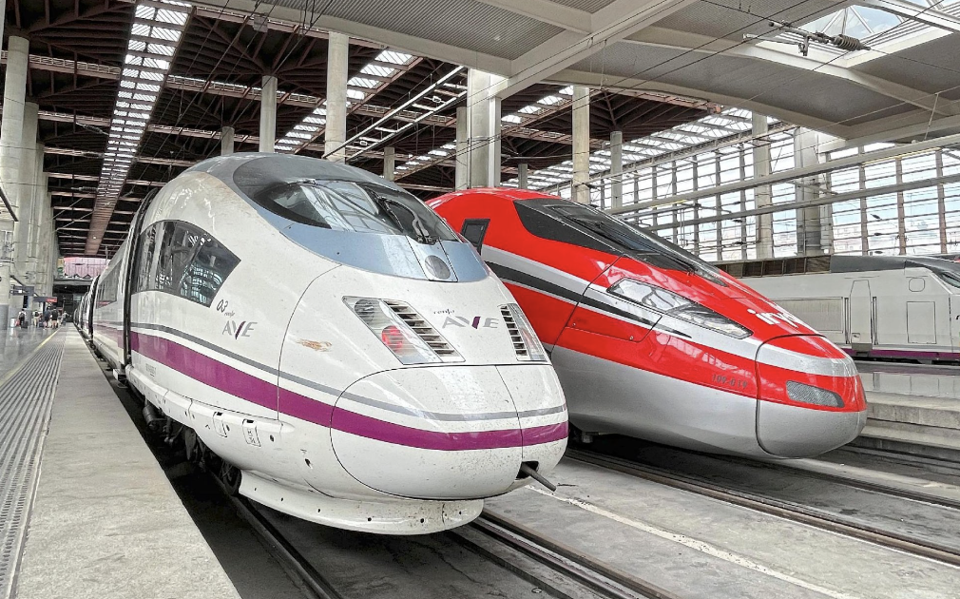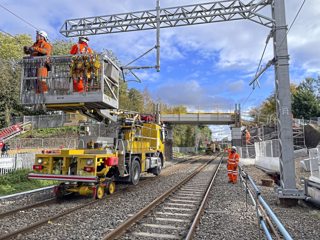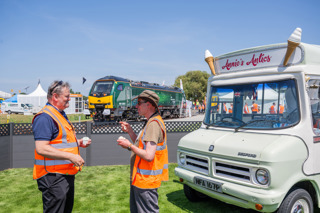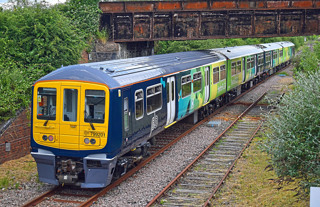The latest news headlines are in… and according to the UN chief, the era of global boiling has arrived.
Tackling climate change has been on the business agenda for years. In fact, many of the UK’s biggest organisations, including the likes of BP, Ericsson, IKEA, British Airways and Unilever, have already committed to reducing their greenhouse gas emissions and set targets to reach net-zero emissions in their supply chains by 2050.
Now it’s time for the UK rail industry to play its part.
And there are three key factors that we need to address if we want passengers to make greener choices: travel time, convenience, and affordability.
Business travel must be greener, but rail has a responsibility to make that a reality
Just recently, it was revealed that Network Rail spent an average of £10,000 per week last year on staff air travel (RAIL 989). That’s more than 2,600 air tickets that were bought, with many of those flights within Britain - something which is more than serviceable by our nation’s rail service.
While this type of business travel behaviour is not unusual, it’s disappointing when we consider the 20,000 miles of track that National Rail operates across Britain.
It must be remembered that these business travel decisions are a significant contributor to air travel’s 2.5% stake in global CO2emissions. Encouraging passengers to go green by choosing trains over planes is increasingly crucial.
Change can happen, but it is up to those at the forefront of the rail industry (such as Network Rail) to lead by example. While there is no single solution to our collective climate challenge, travel is one area where businesses can make an immediate change.
Rail is the natural alternative - on average, it emits six times less emissions per passenger, compared with air travel.
This isn’t to say that some air travel will not always be necessary. Some routes are just not serviceable by train. But if we are to make a meaningful step in cutting the emissions of business travellers, we need to look at the domestic and short-haul flights that could be easily replaced by train journeys.
So, how do we encourage businesses to make green choices?
Rail needs to show that it can compete with air on affordability, time, and traveller experience.
These are the big three factors on any passenger’s mind: how much is it going to cost; will I get there as quickly as possible; and will the process be smooth, comfortable and easy?
To this point, air travel has held a monopoly on all three. But rail has an opportunity to change this.
Speed and competition
High-Speed Rail (HSR) is a clear answer to the travel time challenge, especially considering that rail journeys typically depart from and arrive in city centres - as opposed to airports, which sit on the city outskirts.
Rail travel also involves far fewer time-consuming security measures than air travel. Combine this with faster journey times as a result of HSR, and rail has a real opportunity to outspeed air on domestic and short-haul routes.
Look at the impact of HSR in Spain - when the Madrid to Barcelona route added HSR services, the number of passengers choosing rail over planes jumped from a mere 12% to nearly half (48%).
Similar gains were also seen in Italy, where the addition of HSR to the route between Milan and Rome increased rail’s passenger share from 36% to 58%.
But the real key is not just the HSR routes themselves, but in adding more competition to these routes.
You only need to look at these same journeys to see that the numbers speak for themselves. Adding competition to the Madrid-Barcelona route further boosted the line’s passenger share to a staggering 73%. And on the Milan-Rome route, the passenger share rose from 58% to 80% with the addition of new carriers to the line.
Closer to home, the London-Edinburgh rail route recorded an increase in passenger share from 35% to 63% because of greater competition.
Taking an average of the market share increases across these three routes, and then applying that to the other 28 European routes currently covered by HSR, we estimate that adding competition to these lines would lead to an average modal shift hike of 50%.
On an environmental level, the impact could be huge: this shift could prevent up to 2.4 million tonnes of carbon emissions from entering Earth’s atmosphere.
Ease and convenience
Beyond the benefits of HSR, the simple fact is that we need to make rail travel easier. In a space where fare purchasing is unclear, ticketing is labyrinthine, and multiple providers offer similar but not identical services, clarity of experience is fundamental.
This is particularly true for businesses. When you think about the number of people responsible for booking travel within an organisation (from the individual and the team lead, to HR and finance teams), travel decisions are being made frequently, and often tickets are being bought in bulk. This all means that the easiest booking process will win out.
Ultimately, the easier it is to buy a ticket (and to buy the right ticket at the right price), the more tickets are likely to be bought.
Rail needs to bring simplicity and ease to the booking process if it’s going to tempt businesses away from air travel and deliver the environmental impact we desperately need.
Even simple changes to the booking process - such as adopting a calendar search function, similar to that offered by many airlines - would boost the customer experience, making it easier for business travellers to find the most convenient journey at the best price, all at a glance.
To stand up to the climate challenges on our doorstep, the way businesses travel needs to change. But this challenge lies at the feet of the rail industry. We need to collectively commit to and invest in the changes that will ensure no traveller has to compromise on affordability, time of travel, or passenger experience.


















Login to comment
Comments
No comments have been made yet.